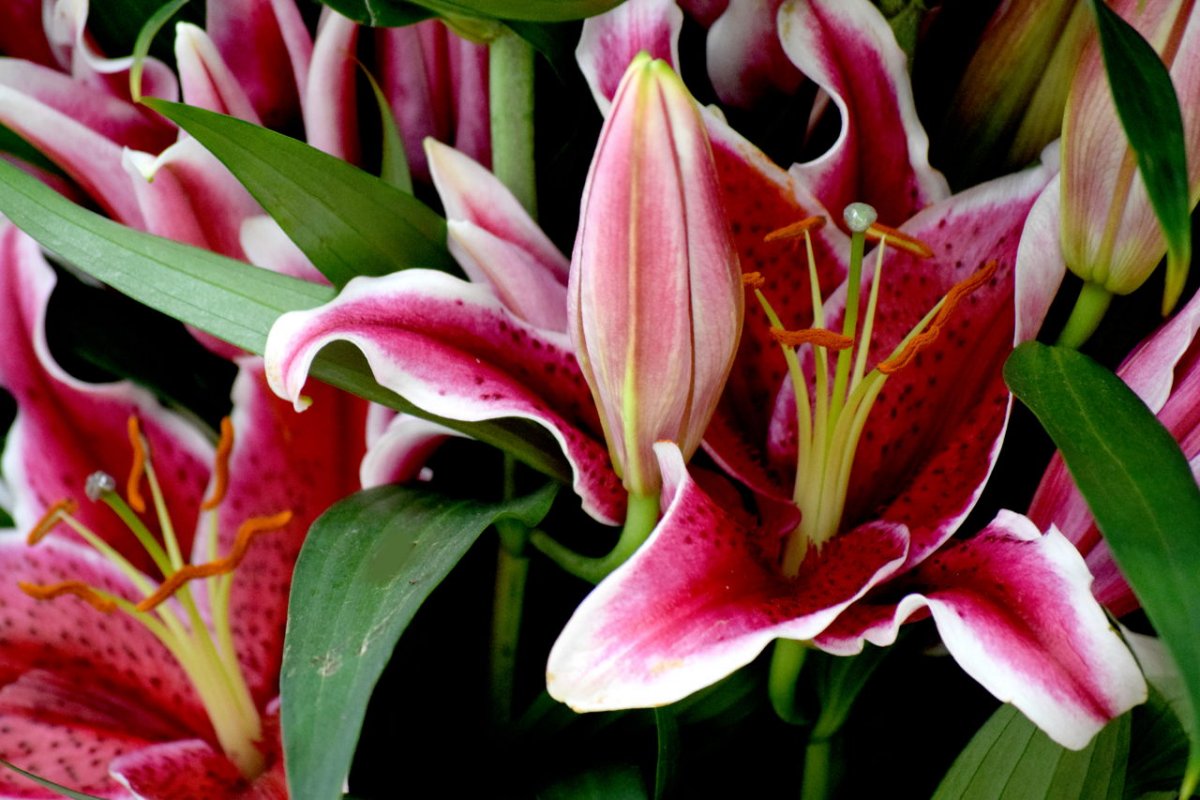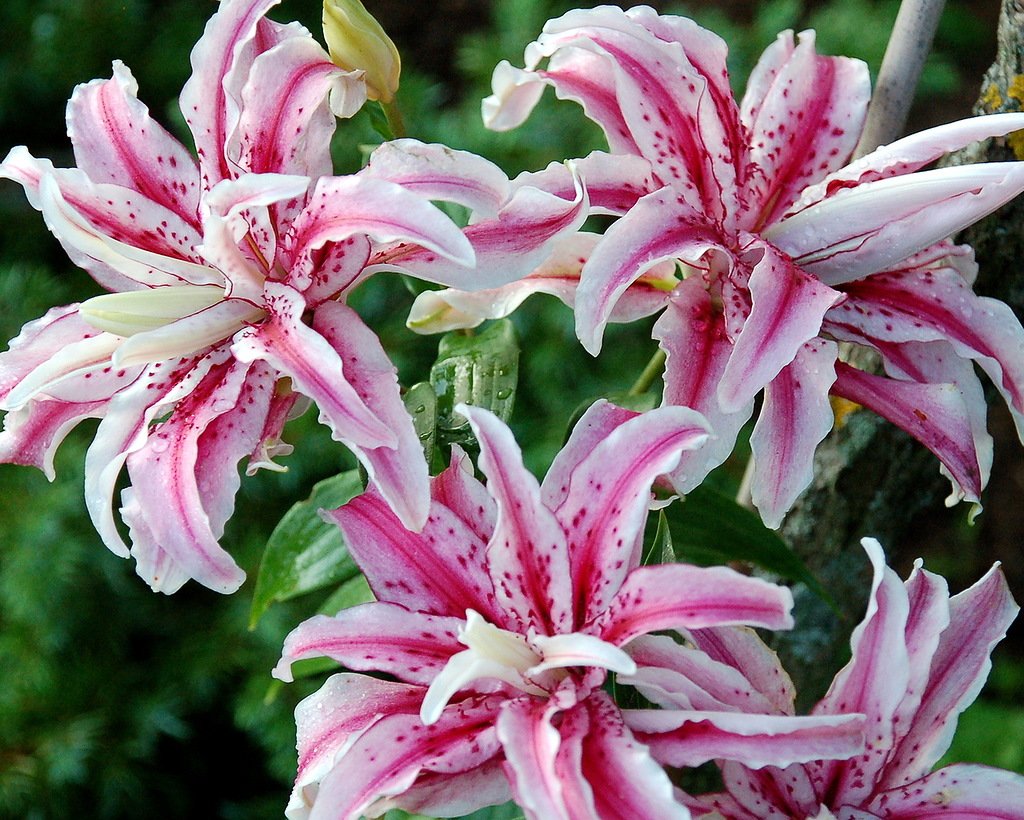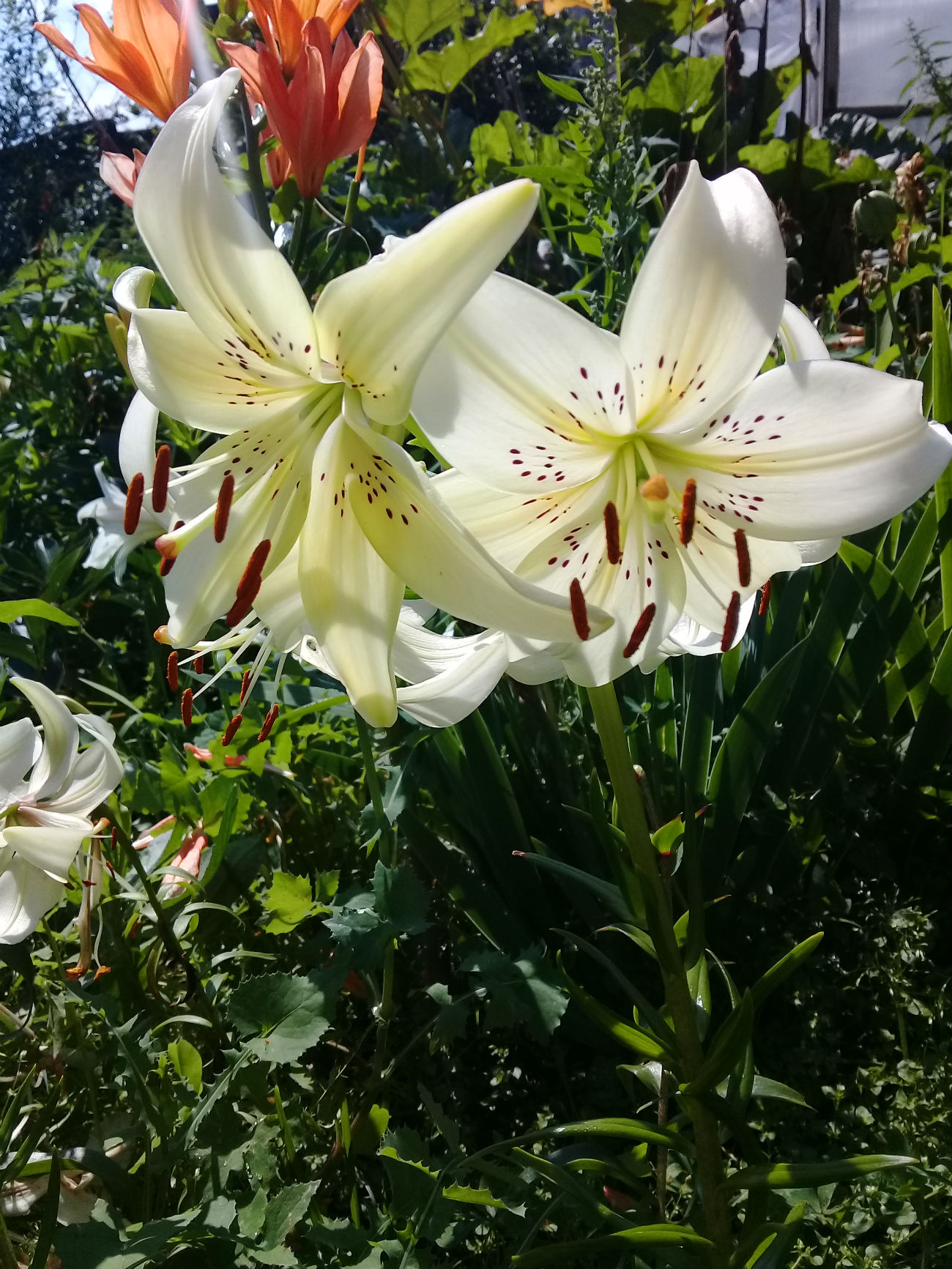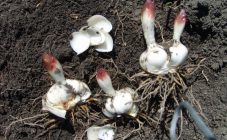Content:
Lilies are very common, due to the incredible beauty and colorfulness of the buds. The flowering plant belongs to the genus Liliaceae, grows from bulbs. Today there are about 80 varieties and varieties of lilies. Lilies grow freely in North America, Europe and Asia. They have a rich history, many legends of various peoples are associated with them.
But often agronomists, especially beginners, are faced with various problems, wondering why a lily does not grow in the garden. Watching how the once beautiful plants slowly shrink and become unattractive, the flower lover begins to look for information on this issue.
General rules for caring for lilies
If the lilies have become low and small, it is necessary to sound the alarm and identify the root cause of this phenomenon. There can be many provoking factors, but one of the main ones is non-compliance with the rules of agricultural technology.
General agrotechnical rules for growing lilies:
- Lilies are planted in early autumn (the third decade of September - the first two decades of October), snow-white varieties are planted in August. Lily bulbs can be planted in spring for late-flowering varieties.
- The culture is propagated by bulbs, which must be dug up with the onset of late autumn. It is necessary to store the planting material in a dry room at a positive low temperature.
- The plant is light-loving, so it will grow and bloom luxuriantly in sunny areas or in partial shade.
- There are requirements for the soil - it must be drained, loose, fertile and moderately moist.
- Lilies are moisture-loving, they need regular watering, especially in the first half of summer, during the formation of buds.
- Particular attention should be paid to the introduction of mineral and organic fertilizers into the soil. The optimal frequency is 3 times per season: the first one soon after the onset of spring, during bud formation, and the final one after flowering.
- The plant propagates, as a rule, in a vegetative way: by dividing cuttings, scales, nests. The seed method of reproduction is also admissible.
The plant is susceptible to diseases and pests. Most often, the bushes infect the following pathogens: rodents, lily beetles, bears, larvae of lily beetles, beetles, lily flies, wireworms, spider mites and thrips.
Of the diseases, the agronomist often has to deal with rosette, fusarium (onion rot), viral mosaic, wet rot of bacterial origin, rust, brown spot, penicillosis, anthracnose, blue mold and gray rot.
It should be noted that subject to all the rules of planting and care, the flowering of lilies is long - from mid-summer to autumn.
Why lilies become smaller: causes and methods of treatment
Lilies were crushed, what should I do? This question is of concern to many flower growers, especially beginners. First of all, it is necessary to correctly establish the reason why the lilies grow poorly in height and why the lily bulbs become smaller.
There may be several reasons, each in more detail.
- Reducing the feeding area of the bulbs.
The most common breeding method for lilies is bulbous. For optimal development, a fertile and well-drained soil with a high concentration of nutrients is required.
After this time, the bulbs begin to actively divide, babies are formed, which entails a decrease in the feeding area of one bush. This is one of the common reasons why lilies get shorter and smaller. The bulbs will be connected to each other until the grower digs them up and separates them carefully on his own.
- Nutrient Deficiency.
The flower loves fertile slightly acidic or neutral drained soil, when planting it is recommended to use a mixture of peat, sand and humus.
Regularly, it is necessary to apply balanced mineral fertilizers to the soil at intervals of several weeks throughout the entire growing season.
What if lilies do not grow well? Often agronomists are not aware that nitrogen fertilizers inhibit plant growth and have a detrimental effect on it. In addition, the bushes do not need daily watering - it should be moderate so that the bulbs do not dry out in the soil.
- Poor quality of planting material.
Why did the low lily grow, if not a low-growing variety was purchased? It's all about the bulbs.
There is a direct relationship here - healthy and large bushes with lush flowering will be formed only from healthy bulbs. In order for the bulb to mature properly, the stems should not be cut off after flowering. Thanks to this, the bulb has the ability to accumulate the maximum concentration of nutrients. It is advisable to remove only seed pods.
- Thickened planting of flowering plant bulbs.
When planting bulbs, a certain interval must be observed between them. Otherwise, flowering will be weak and leaves with stems will be frail. The most suitable distance between the bulbs is approximately 12-18 cm. Only in this case the bushes will be provided with the space necessary for full development.
With a dense planting, the likelihood of developing fungal diseases increases significantly, which are not always treatable. To help you need to do one thing - plant a flower.
- Gray rot.
The botrytis fungus infects lily bushes, usually in rainy and damp weather.
To combat the disease, special chemical compounds should be used - fungicides or a solution of copper oxychloride, copper sulfate. To prevent the development of the disease, it is carried out by irrigation of a Bordeaux liquid solution (1%).
Prevention
To ensure long and lush flowering, the plant must be properly cared for. Necessary measures:
- Watering should be carried out in accordance with all the features. In summer, abundant watering must be carried out if there is a drought on the street. Lilies do not like excess moisture, it leads to rotting of the bulb. The plant accumulates enough moisture in the spring.
- In the process of cultivation, weeds should be regularly removed and the peri-stem circle should be loosened.
- When cutting flowers on a bush, it is important to leave the foliage, otherwise the plant may simply not overwinter.
- When planting a plant in spring, the grower should not allow the lily to grow flowers. This is due to the weakness of the plant, the bush must accumulate in itself the maximum concentration of nutrients. Only in the second growing season will the bush be strengthened and will be able to provide lush, beautiful and long flowering.
- If the bushes reach impressive sizes, then it is advisable to build a support to which the branches will be tied.
- A dried stem with leaves must be cut off, leaving one stump. In the fall, it is completely carefully dug up together with the onion.
Preparing lilies for the coming winter cold is easy. It is enough after the end of flowering to reduce the application of fertilizing and the frequency of watering. At this time, the plant is in dire need of phosphorus and potassium.The stems must be removed, the seed boxes must first be cut off. The soil is mulched, the bulbs, as a rule, are covered with a large layer of peat or dry fallen leaves. It is also recommended to put spruce branches on top. Shelter must be done only at stable subzero temperatures in winter.
Possible difficulties
Lilies are wayward perennials, so a novice gardener may face several more difficulties:
- If a lily variety does not winter well, then most likely we are talking about oriental varieties. They need a lot of moisture in the summer and no moisture in the winter. With the onset of autumn, such species should be well covered so that the bulb does not accumulate excess moisture.
- Excess moisture in the soil leads to wilting of foliage. These surpluses contribute to the development of fungal diseases and decay of the root system and bulb.
- It is necessary to remove foliage if the soil is very overheated. To reflect the "evil" sun rays, it is necessary to plant picky plants nearby that have good compatibility with lilies. You can also use reflective materials, sawdust or straw.
- Line beetles are the most dangerous. If the colony is small, then the insects can be collected by hand. If the lesion is severe, it is recommended to use chemical solutions. Soon after irrigation, this will adversely affect the condition of the flowers, but they will quickly recover.
Lilies are attractive and unpretentious perennials. Yes, the nature of the bushes can be capricious, but having mastered all the agrotechnical rules, growing lilies in open soil does not cause much trouble. The main thing is to correct the above-described care features depending on the cultivated variety. By knowing what to do when the lilies become smaller, the flower lover will be able to restore the plants to their normal size.















